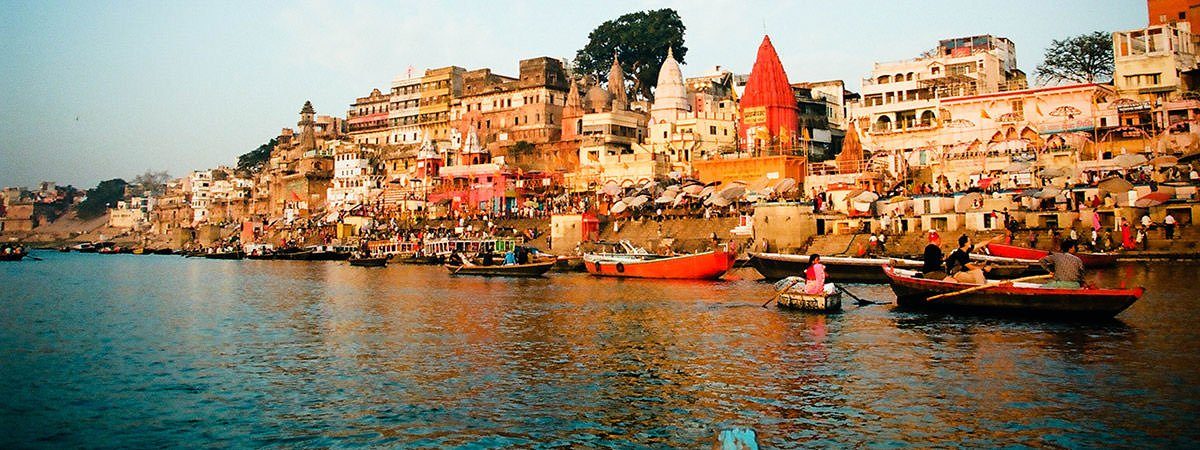The Ganges, known primarily as Ganga in India, is a river that flows through India and Bangladesh. Formed by the confluence of the rivers Bhagirathi and Alaknanda, it is the longest river in India. The Ganges has played a tremendous role in the Indian civilization for more than two millennia supporting its population through its water and fertile plains, among other things. For times immemorial, Ganga is considered sacred and the holiest of all rivers in Hinduism, the dominant religion in India. It has been mentioned throughout Indian literature from ancient times and is personified as the Goddess Ganga. There are numerous myths related to the river including how it originated and how it was brought to earth through the efforts of King Bhagiratha.
The Ganges basin is the most populated river basin in the world and the river supports the maximum number of people in the world. It is also home to numerous aquatic species including the Ganges River Dolphin, the National Aquatic Animal of India. However, there are concerns due to the rising pollution levels of the river and it has become one of the most polluted rivers in the world. Know more about the mythology, history, geography, significance and pollution of the Ganges River through these 10 interesting facts.
#1 ACCORDING TO MYTH, GANGES WAS CREATED THROUGH THE FEET OF LORD VISHNU
Asuras have been described in Ancient Indian texts as powerful demigods. According to an Indian myth, Bali Chakravarthy was an Asura king and an ardent devotee of Lord Vishnu, who is one of the three most important Gods in Hindu religion along with Brahma and Shiva. Bali had become immensely powerful and feeling threatened, Lord Indra, the king of heavens, sought Vishnu’s help in retaining his supremacy over the heavens. Bali prepared to carry out a yajna (ritual). During such ceremonies, kings often donated to Brahmins whatever they requested. Vishnu descended on earth as a dwarf Brahmin in Bali’s kingdom.
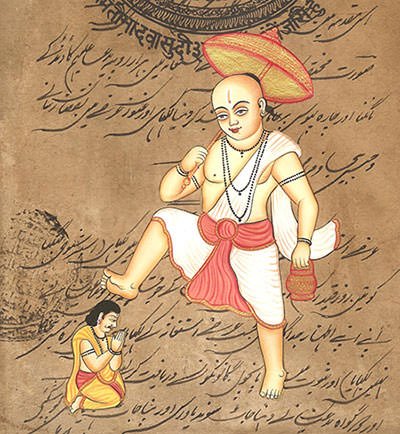
Though he was forewarned of the true nature of this dwarf, Bali wanted to keep his word and give whatever the Brahmin wanted and that was three steps measured by his foot. The dwarf Brahmin then grew in size into a giant. He measured the earth in his first step and the skies in his second. There was nothing left for the third step. The humbled king offered his head and the Brahmin placed his foot and pushed Bali to Patala Loka (lower world). By washing the feet of this magnificent form of Lord Vishnu, Lord Brahma collected the holy water in a pot which settled as Ganga (the Ganges) in the Brahmaloka, the highest heavenly realm. Due to this myth, Ganga is also known as Vishnupadi, which means “originating from the lotus feet of Vishnu”.
#2 SHE CAME DOWN TO EARTH DUE TO THE EFFORTS OF KING BHAGIRATHA
According to a myth, King Sagara was to perform a great ritual to acquire immense power. This ritual involved horse sacrifice. Fearing his dominance, Indra stole the sacrificial animal and left it at the ashram of Sage Kapila. Unable to find the horse, Sagara sent his 60,000 sons to search for it. Upon finding it at the sage’s abode, they created a commotion which disturbed the worship of the sage. Moreover, they accused the sage of stealing the horse. Angered, Sage Kapila burnt all of them to ashes. Without completion of ceremonial rites, they wandered as ghosts. Upon request, the sage mentioned that only if Ganga was to flow on the ashes would they be able to move on to heaven.
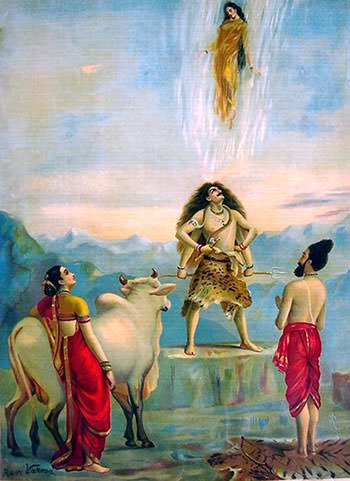
After several generations, King Bhagiratha, a descendant of King Sagara, performed a penance to Lord Brahma lasting several thousands of years. Pleased with this, Brahma granted Bhagiratha’s wish of Ganga flowing on earth and freeing his ancestors. However, the force of fall of the mighty Goddess Ganga would be difficult to sustain. Only Lord Shiva could prevent the destruction it would cause. Thus, after Bhagiratha’s further penance to Shiva, the Lord released her slowly from his locks so she may fulfil her destiny. Bhagiratha’s wish was thus fulfilled as the Goddess Ganga descended to earth in the form of the River Ganges. To commemorate his efforts, the head stream of the River Ganges is called Bhagirathi.
#3 GANGES IS MENTIONED THROUGHOUT ANCIENT INDIAN LITERATURE
The Vedic Age (c. 1500 – c. 500 BCE) was a period in the history of the Indian subcontinent beginning toward the end of the Indus Valley Civilization and before the second urbanization in central Indo-Gangetic Plain. It is named after the four Vedas, the oldest scriptures of Hinduism. The Indus Valley Civilization, one of the four great ancient civilizations, was based on the rivers Indus and Sarasvati. The Rig Veda, one of the oldest extant texts in any Indo-European language, thus lays more emphasis on Indus and Sarasvati, though the Ganges is also mentioned.
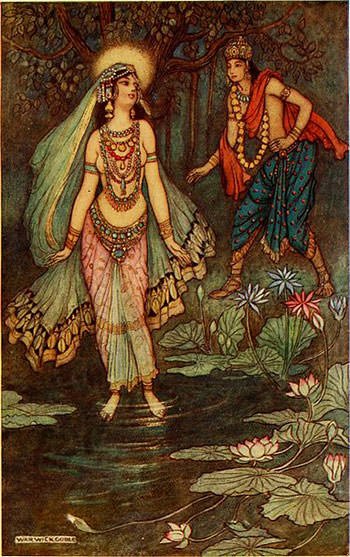
The decline of the Indus Valley Civilization in the early 2nd millennium BC, marks a point where the center of the Indian civilization moved from the Indus basin to the Ganges basin. Thus, the later three Vedas give much more importance to the Ganges. The story of Ganga, where she is brought to earth by Bhagiratha, is told in ancient Indian texts including the Ramayana, the Mahabharata and several Puranas. In Mahabharata, Goddess Ganga is the wife of Shantanu; and the mother of heroic warrior-patriarch, Bhishma. There are numerous other stories related to the Goddess Ganga throughout ancient Indian literature.
#4 IT IS FORMED BY THE CONFLUENCE OF THE RIVERS BHAGIRATHI AND ALAKNANDA
River Ganges has two source streams, the Bhagirathi and the Alaknanda. The Bhagirathi is formed at the foot of Gangotri Glacier, at Gomukh, in the state of Uttarakhand, India. The Alaknanda is formed by the snow-melt of peaks such as Nanda Devi, Trisul and Kamet. The term Panch Prayag (“five confluences”) is used to denote the five sacred river confluences with Alaknanda in Uttarakhand. They are, in downstream order, Vishnuprayag, where River Dhauliganga joins the Alaknanda; Nandprayag, where River Nandakini joins; Karnaprayag, where River Pindar joins; Rudraprayag, where River Mandakini joins; and finally, Devprayag, where the River Bhagirathi joins the Alaknanda to form the Ganges.
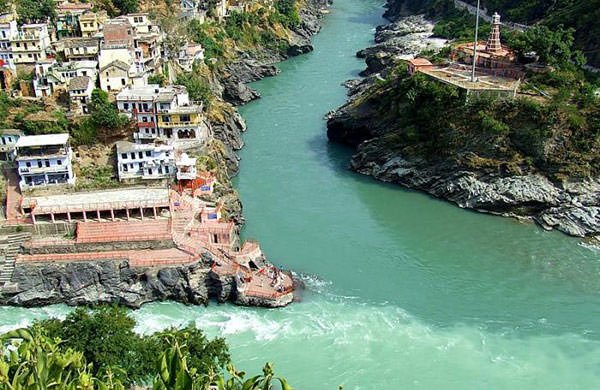
From Uttarakhand, the Ganges flows south-east towards Bangladesh finally emptying into the Bay of Bengal. As the combined waters of the Ganges, the Brahmaputra river and other minor river systems empties into the Bay of Bengal, they form the Ganges Delta, or the Sundarban Delta, which is the largest delta in the world with an area of about 59,000 sq. km (23,000 sq. mi).
#5 THE GANGES IS THE LONGEST RIVER IN INDIA
With a length of 2,525 kilometers (1569 miles), the River Ganges is the longest river in India. It is followed by Godavari, which has a length of 1465 kilometers (910 miles). In terms of discharge, the Ganges is the 17th largest river in the world with an average annual discharge of around 16,650 m3/s (588,000 cu ft./s). This is more than twice the annual discharge of the much longer River Indus. The discharge may also be calculated for the mouth of the Meghna River, thus combining the Ganges with the Brahmaputra and Meghna. This results in an average annual discharge of about 38,000 m3/s (1,300,000 cu ft./s), which is the fourth highest in the world behind the rivers Amazon, Congo and Orinoco.
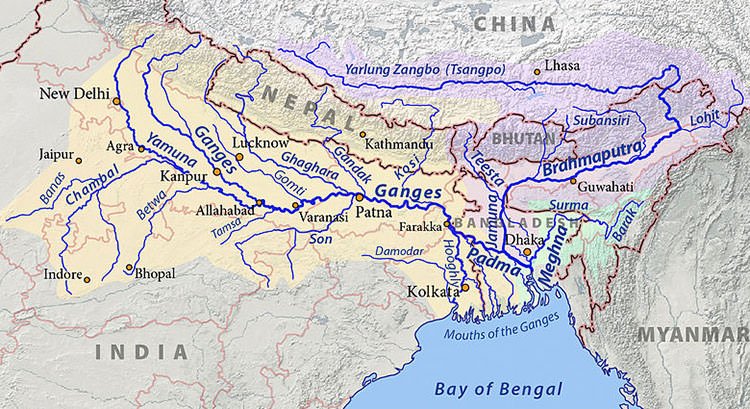
The Ganges basin including the delta but not the Brahmaputra or Meghna basins, is about 1,080,000 km2 (420,000 sq. mi). It is distributed among four nations. India has 861,000 km2 (332,000 sq. mi, 80%); 140,000 km2 (54,000 sq. mi, 13%) is in Nepal; 46,000 km2 (18,000 sq. mi, 4%) is in Bangladesh; while China has 33,000 km2 (13,000 sq. mi 3%).
#6 THE GANGES PROVIDES FOOD FOR MORE THAN 400 MILLION INDIANS
For more than two millennia, the flat and fertile terrain of the Gangetic Plain supported the populations of various great empires of India from the Maurya Empire to the Mughal Empire. All these empires had their demographic and political centers in the Gangetic Plain. Today, waters from the Ganges and her tributaries irrigate the fields of the millions of acres of agricultural crops which are grown along her banks. These farms provide food for more than 400 million inhabitants, which is nearly one-third of the population of India. Thus the importance of the Ganges to India cannot be overstated. Farmers grow a wide variety of crops on the fertile soil of the Ganges basin including rice, sugarcane, lentils, oilseeds, potatoes and wheat. Lakes and swamps along the river also provide a rich fertile land for crops like chilies, legumes, sesame, jute and mustard. The Ganges basin is the most populated river basin in the world and the River Ganges supports the maximum number of people in the world.
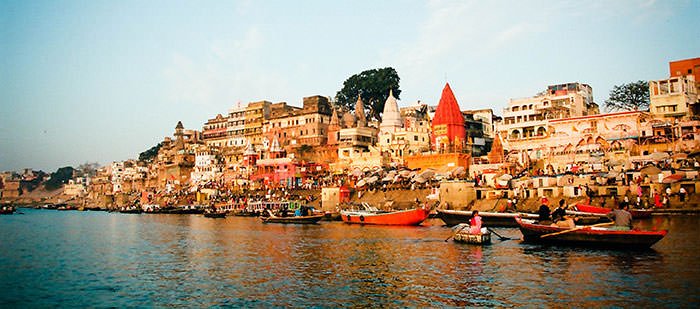
#7 THE GANGES HAS HIGHER PROPORTION OF ANTIBACTERIAL AGENTS
Apart from agriculture, people living near the Ganges are dependent on the river for fishing, transportation, production of hydroelectricity and drinking water. The river provides water to about 40% of India’s population across 11 states, serving an estimated population of 500 million people which is more than any other river in the world. The Ganges also serves tourism and recreational purposes. It is estimated that sites on the banks of the river in the states of Uttar Pradesh and Uttarakhand alone have attracted over 230 million pilgrims during mega pilgrimages years generating millions of dollars of revenue.
Bacteriophages are viruses that infect and kill bacteria and could provide a useful alternative to antibiotics. They are essentially harmless to humans because they are highly strain specific. Moreover, they often target bacteria that cause deadly diseases. The Ganges contains more bacteriophages than any other river in the world due to which its water possesses self-cleansing and healing properties. This was first discovered by British bacteriologist Ernest Hankin in 1896 while studying the mysterious anti-bacterial properties of the Ganges.
#8 HINDUS CONSIDER THAT BATHING IN THE GANGES WASHES AWAY ONE’S SINS
For times immemorial, the River Ganges is considered sacred and the holiest of all rivers in Hinduism. It is personified as the Goddess Ganga and it is believed that bathing in the river brings good fortune, causes the remission of one’s sins and facilitates moksha (liberation from the cycle of life and death). The Goddess Ganga is often depicted in Indian culture with four hands and mounted on her her vahana (vehicle), the Makara, an animal with the head of a crocodile and tail of a dolphin.
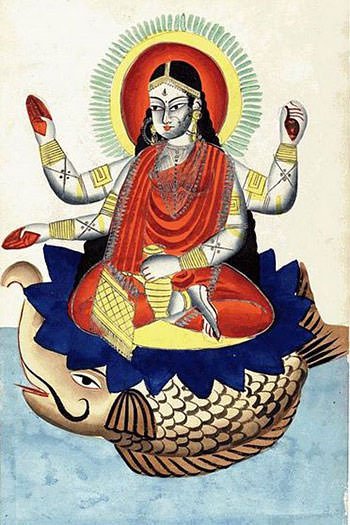
There are many sacred places along the River Ganges including Gangotri, Haridwar, Allahabad, Varanasi and Kali Ghat. The Kumbh Mela is a mass Hindu pilgrimage of faith which is celebrated at four places: Haridwar, Prayag, Ujjain and Nashik. Two sites of the Kumbh Melas are related to the Ganges. It is held a the banks of the Ganges at Haridwar; and at the confluence the Ganges with Yamuna and the invisible Sarasvati at Allahabad. An estimated 120 million people visited the Kumbh Mela in Allahabad in 2013, including over 30 million on a single day. The Kumbh Mela is the largest peaceful gathering in the world and is considered as the “world’s largest congregation of religious pilgrims”.
#9 GANGES RIVER DOLPHIN IS THE NATIONAL AQUATIC ANIMAL OF INDIA
It is estimated that the River Ganges is home to 350 fish species. In a major 2007–2009 study, a total of 143 species of fish were recorded. The most diverse orders are Cypriniformes (barbs and allies), Siluriformes (catfish) and Perciformes (perciform fish). Each of these comprise about 50%, 23% and 14% of the total fish species in the drainage respectively. Apart from fishes, the Ganges contain several types of crocodiles including gharial (Gavialis gangeticus) and mugger crocodile (Crocodylus palustris).

The most famed faunal member of the Ganges is however the freshwater Ganges river dolphin (Platanista gangetica gangetica). Found primarily only in the river Ganges and Brahmaputra and their tributaries, it is one of only five true freshwater dolphins in the world. Moreover, the Ganges river dolphin has been declared by the Indian government as the National Aquatic Animal. Apart from these, the river is said to support numerous species of birds which are unique to India. Unfortunately, numerous of these species, including the Ganges river dolphin, have dwindled or are facing extinction due to several factors including pollution of the river and human activities like building dams.
#10 THE GANGES HAS BECOME SEVERELY POLLUTED DUE TO SEVERAL REASONS
The pollution of the Ganges is a major issue that India must resolve. When the Indian government realized the gravity of the issue in the 1970s, stretches of over six hundred kilometers along the Ganga were already found to be effectively ecologically dead zones. The pollution of the Ganges is due to several reasons including human as well as industrial waste. Continued farming with large use of chemical pesticides and insecticides directly going into the river owing to agricultural runoff has contributed significantly to the pollution of the river. Various human activities such as bathing and washing clothes has also led to polluting the river.
Apart from affecting humans, pollution of the Ganges also effects the aquatic life in the river. For example, there is development of tumors within zooplanktons, which serve as food sources for tiny fish. In turn, these small fishes are consumed by larger fish species and thus the entire food chain involved is effected. At least 10 species, including the Ganges river dolphin, found in the Ganges for centuries, are on the verge of extinction. Since Narendra Modi has become Prime Minister of India, he has affirmed to work in cleaning the river. An estimated US$460 million (Rupees 2,958 crores) have been spent until July 2016 in various efforts to clean the river.

